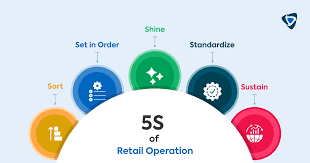How to Improve Retail Operations Management Without More Staff
Retail success doesn’t always require hiring more people—it requires managing smarter. In a world where labor costs are rising and staffing is harder than ever, retailers need to do more with what they already have. That’s where effective retail operations management becomes critical.
From minimizing wasted time to reducing inefficiencies like buddy punching, improving operations doesn’t mean stretching your team thinner—it means using the right tools and systems to get better results from the team you have.
Here’s how to elevate retail operations, streamline store performance, and boost accountability—without hiring a single new employee.
1. Eliminate Time Theft with Smarter Attendance Tracking
One of the most overlooked ways to improve retail operations management is by stopping buddy punching. This subtle form of time theft—where one employee clocks in or out for another—adds up quickly across multiple shifts and locations.
To stop it without extra oversight:
- Implement biometric or facial-recognition time tracking
- Use GPS-based clock-ins to confirm location
- Integrate camera-based punch verification
This small tech upgrade can recover hours of lost productivity and payroll expense.
2. Use Data to Make Every Shift Count
You don’t need more people—you need more productive shifts. With the right retail operations management tools, you can monitor:
- Rep-level sales performance
- Interaction times with customers
- Idle vs. active time on the floor
These insights help identify underutilized employees and shifts, so you can coach, reassign, or support team members to drive better results without hiring more staff.
3. Align Schedules With Actual Store Traffic
Smart scheduling is one of the easiest ways to improve operations. Many stores overstaff during slow times and understaff during peak hours—not due to poor intent, but due to poor data.
Here’s how to fix that:
- Use People Counters to measure real customer traffic
- Analyze hourly trends by day of the week
- Assign top-performing reps during high-volume periods
When you align labor with demand, you’ll reduce payroll waste and improve customer service—without needing extra hands.
4. Monitor Store-Level Execution in Real Time
You can’t improve what you can’t see. That’s why visibility is at the heart of efficient retail operations management.
Leverage tools that provide daily reports on:
- Store opening and closing times
- Empty store periods
- Shift attendance and punctuality
- Live activity alerts
This allows district leaders and managers to take quick action when something goes wrong—reducing losses and improving accountability across locations.
5. Automate Repetitive Tasks and Manual Tracking
Many operational delays happen because managers are tied up doing manual tasks—like collecting timecards, checking schedules, or reviewing store footage.
Here’s how to automate those:
- Use automated attendance logs with alerts for violations
- Let software flag missed breaks or early departures
- Set standard performance dashboards for each shift
With automation, your managers can focus on coaching, customer service, and growth—not just admin work.
6. Standardize Expectations Across Locations
For multi-store retailers, operational inconsistency can cause major performance gaps. Without standard data and expectations, some stores flourish while others fall behind.
Fix this by:
- Using unified retail operations management tools across all locations
- Setting store-wide KPIs based on traffic, sales, and employee performance
- Comparing performance by opportunity—not just outcome
When expectations are consistent, improvement is easier to manage at scale.
7. Coach Smarter, Not Harder
The goal of improved operations isn’t just tighter control—it’s better outcomes. With accurate, verified data, managers can coach effectively without micromanaging.
Use insights like:
- Rep conversion rates tied to People Counter traffic
- Idle time tracking per shift
- Missed customer engagement trends
This gives team members clarity, builds trust, and enables more targeted performance improvement.
8. Shift the Focus From More Staff to Better Execution
When performance gaps arise, hiring feels like the easy answer—but it often masks the deeper issue: poor execution.
Instead of asking “Who can we add?” ask:
- “Where are we missing opportunities?”
- “Who needs support or training?”
- “Are we using our best people at the right times?”
Smart retail operations management helps answer these questions, so you solve problems without increasing your payroll.
Conclusion: Operational Strength Comes From Smarter Systems
Improving retail operations management doesn’t have to mean hiring more people. In fact, some of the best gains come from simply managing better—with verified data, smarter tools, and tighter processes.
By stopping issues like buddy punching, aligning staffing to traffic, and using data to coach rather than guess, retailers can maximize team output and improve store performance—without expanding headcount.
Operations strength doesn’t come from more people. It comes from more clarity.
FAQs: Retail Operations Management & Buddy Punching
Q1: How can I reduce buddy punching without micromanaging?
Use tech tools like biometric clock-ins or GPS-enabled mobile punch-ins. These automate verification and reduce the need for manual oversight.
Q2: What data points should I track to improve operations?
Track store open/close compliance, idle vs. active time, rep conversion rates, traffic-to-sales alignment, and shift punctuality.
Q3: Can People Counters help with staff planning?
Yes. People Counters give insight into real customer volume by hour and day, helping schedule staff more accurately to match demand.
Q4: How fast can I improve store performance using these methods?
Most retailers begin to see improvements within 30–60 days after implementing smarter tracking and management systems.
Q5: Is this approach scalable across multiple locations?
Absolutely. Unified retail operations management systems let you monitor all stores using the same benchmarks and reporting structure, making multi-store management easier and more effective.

